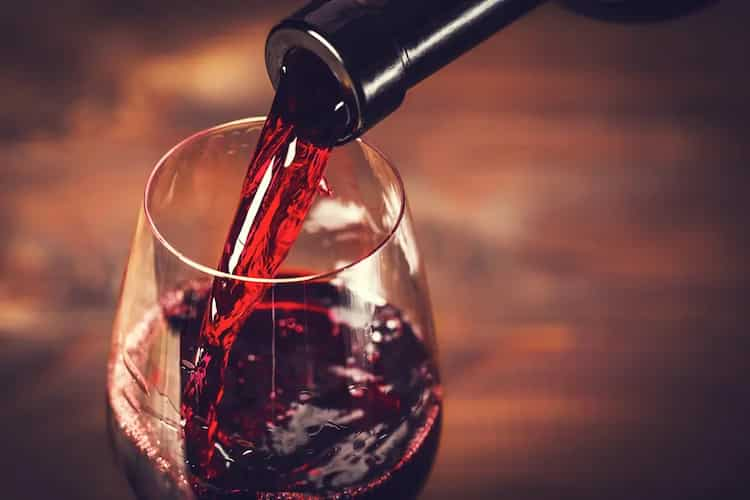Have you ever wondered if it's still okay to drink an old bottle of wine? You're not alone if you've experienced this. It can be difficult to tell if a wonderful wine has gone sour and when to discard it. While many wines do indeed get better with age, this rule does not necessarily hold true for all bottles. In actuality, wine can get sour over time whether it has been opened or not. The good news is that unopened wine is frequently still fine much after the advised drinking window, provided the aroma and flavour are still appealing. It's essential to understand how long various wines normally last, how to determine if wine has gone bad, and the various causes that might cause wine to spoil for the sake of both your health and your wine investments.
Shelf Life Of Wine
White wines can frequently be kept for 1-2 years past their suggested drinking window, red wines for 2-3 years, and culinary wines for 3-5 years if they are stored properly and kept unopened. Fine wine may often be savoured for decades, as you might have imagined. Keep your wine in a cold, dark area, according to recommended wine storage methods. As a way to avoid over-drying the cork, bottles should be set on their sides.
But opened wine is a different story. A wine bottle's contents are exposed when it is opened to heat, light, microbes, and oxygen. These substances set off a number of chemical processes that swiftly have an impact on your wine. Although keeping wine at a colder temperature helps lessen these effects, unsealed bottles of wine will eventually spoil. White wines typically age more quickly than red wines. As a general rule, after being opened:
The duration of ports is one to three weeks.
Dessert wines are suitable for 3–7 days.
About 3-6 days are needed to finish red and rich white wines.
Lighter white wines last four to five days.
With only 1-2 days to enjoy them, sparkling wines are in short supply.

Wine should be properly sealed and kept in the refrigerator to get the greatest delight out of it. Or even better, pour the remaining liquid into a smaller glass container (like an empty 375ml half bottle) so that less oxygen comes into touch with the liquid. To prevent cross-contamination, just make sure it is totally clean or sanitised.
How To Detect
Many devoted drinkers can sense when a wine has lost its quality right away. They are sensitive to the wine's characteristics that signal the drinker when it is overripe. There are three signs that your wine has spoiled.
Appearance: There are a number of visual indicators that indicate a wine has aged past its prime. These consist of: Cloudiness - Wines that were initially clear are exempt from this rule. A wine should generally be discarded if it becomes foggy or forms a film inside the bottle. The cloudiness suggests that bacterial growth started inside the bottle. Similar to fruit, wines frequently turn brown with time when exposed to oxygen. Color changes in unopened wine occur naturally as it ages and are not usually a sign that the wine has gone bad. However, it is worth noting that your wine has started to undergo chemical changes. However, it is important to remember that your wine has started to undergo chemical changes. So, if the bottle was not intended to mature and you see a colour change, it is probably no longer good. The emergence of bubbles in your wine signifies the start of a second fermentation. These bubbles, which are not present in champagne, indicate that your wine has likely deteriorated and should be discarded.
Smell: One of the most obvious ways your wine will let you know it's time to move on is usually through smell. Depending on how your wine reacts to outside influences, these aromas are frequently disagreeable and medicinal — like chemicals or vinegar — but they can also be sweet. Common odour changes include: Smells of acetic acid You may detect odours that resemble sauerkraut, smell like vinegar, or are sharp or tangy when bacteria in your wine begin to produce acetic acid. Odors of oxidation, when wine oxidises, it turns stale and releases aromas that are unusually nutty, apple- or applesauce-like, smoky, and sweet, like burnt marshmallows or caramel. Reduction Odors, Some wines spoil before they are even opened as a result of wine flaws. When this happens, you could smell things like burned rubber, rubbish, or cabbage.
Taste: You might detect strong or odd flavours in inferior wine if you ignore the indications of altered appearance and smell. These flavours frequently have a horseradish-like taste, a sharp or sour vinegar flavour, or a sherried or caramelised flavour.
Wines frequently get poor due to ageing or staying out too long. However, if a wine fault exists, even unopened bottles of wine might spoil. A fault is a flaw that results from a natural problem, bad winemaking techniques, or mistakes during the storage procedure. Similar to when you would taste a wine that has already been opened, odd flavours or aromas can frequently indicate wine flaws.
Even while a bad bottle of wine won't necessarily harm you, it's advisable to discard it and start over with a new bottle. Examining the characteristics of a bottle of wine that you are certain has gone bad for a while is an excellent approach to train your senses to spot bad wine. Examine the colour and clarity, smell it, and, if you're comfortable with it, try a drop. This will make it easier for you to recognise overripe wine when you come across it in the future.


